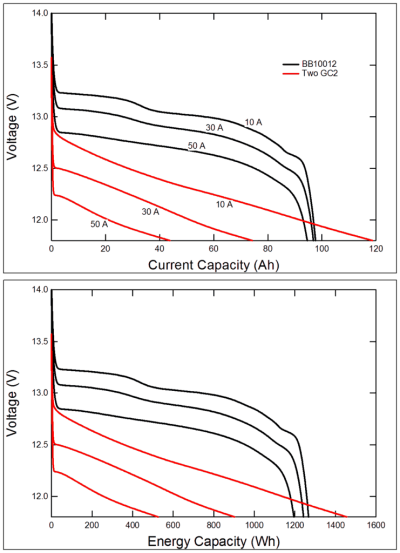I have been on the sidelines regarding battery upgrade to Lithium due to cost for now. There has been much discussion on this forum but I quickly get lost in the details. But I just read this article and was astonished at the performance advantage of Lithium shown here. I am surprised the lead acid only show half their “rated” capacity as being available to use; only ~100Ah (at 10 amp discharge) for two 235Ah 6v batteries. Even worse for higher amp discharge. I realize there is more to the lithium vs lead acid story, but this difference is astounding.
I like the way Battleborn has presented the results. But are these results truly representative or has Battleborn fudged something here or left out important information?
https://battlebornbatteries.com/com...-lifepo4-battery-two-6v-gc2-batteries-series/
I like the way Battleborn has presented the results. But are these results truly representative or has Battleborn fudged something here or left out important information?
https://battlebornbatteries.com/com...-lifepo4-battery-two-6v-gc2-batteries-series/


